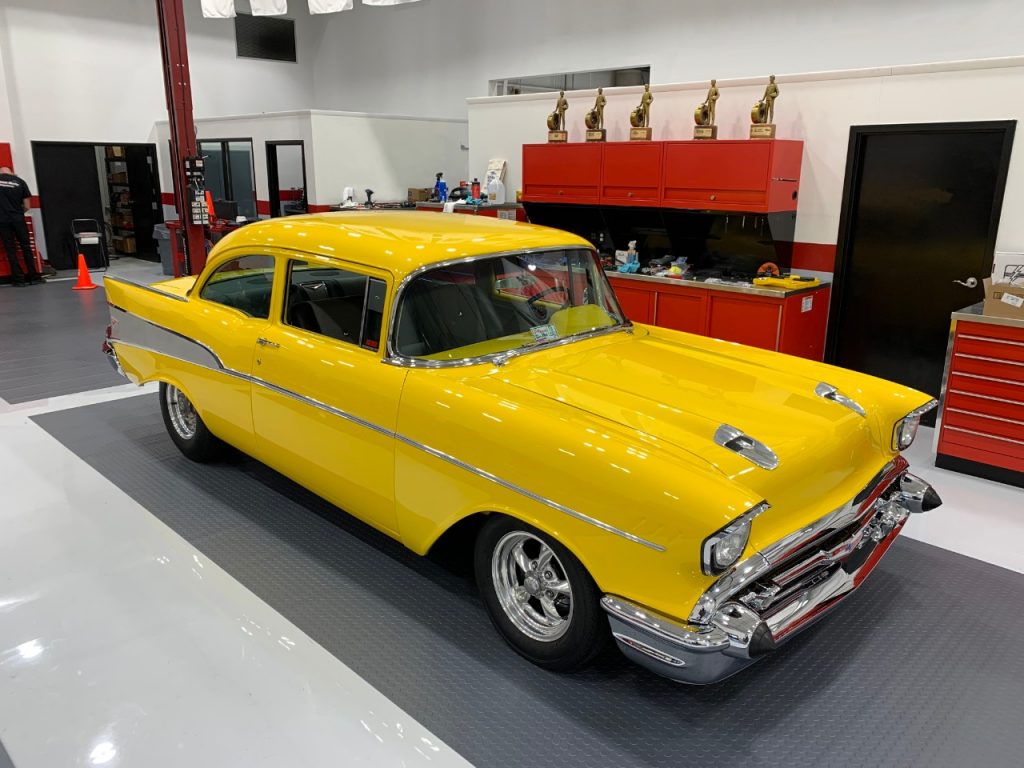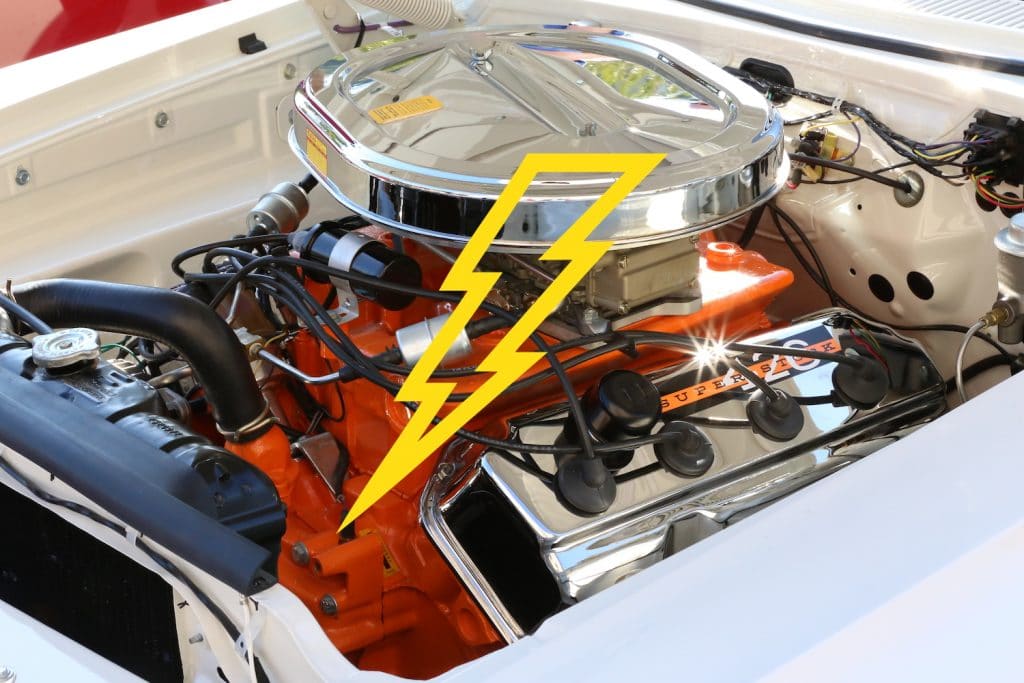Just prior to SEMA, GM announced that it had worked with Cagnazzi Racing to convert the 1957 Chevrolet known as Project X to electric power.
That car was just one of a bunch of electric conversions that were on the floor at this year’s SEMA show, which should serve as a big neon sign to those of you paying attention to the automotive aftermarket. Love them or hate them, electric conversions are coming, and they’re going to be a big part of the automotive scene in the very near future.
Realistically, this shouldn’t be much of a surprise. The game started to change the moment a Tesla took out a Hellcat in a drag race.
Then again, for some of us, it was hinted at even earlier.
Back in my drag racing days, I met John Wayland — the owner of a 1972 Datsun 1200 drag car converted to electric power. Known as “White Zombie,” it ran low 12s back in the early 2000s and smoked my big-block Chevrolet constantly. Silently.
Even back then, circa 2006, it was clear that the power was nothing to mess with. Wayland once mentioned just how careful you had to be with electric motors — Zombie made something like 700 lb-ft at zero RPM back then, which would have been enough to send it through the garage wall and up the tree in the backyard if you accidentally bumped the throttle when it was “on” — but only if you weren’t being careful while working on it. I remember that car generating a good bit of buzz in the media at the time, too, even if it was considered offbeat. Still, it worked. It worked well.
Around that same time, another local racer would often bring an electric drag bike to the strip as well. It sounded like a giant DeWalt drill, but it smoked its tire instantly in the burnout box, and it would leave hard, with just the yelp of a wrinkling slick ringing out across the staging lanes. Eight seconds later, it was a distant brake light. People took notice, if only to shake their heads in astonishment.
Fast-forward to now, and it’s clear that those grassroots racers were on to something — but many in the mainstream still just aren’t ready for it, as demonstrated by social media in the weeks after the debuts and product launches of SEMA 2021. I lost count of how many people lashed out at GM for ruining Project X by swapping its powertrain.

“This isn’t hot rodding.”
“Put it back.”
“Y’all made the world’s biggest ’57 Chevy golf cart.”
Now, I’m as much of a motorhead as the next guy, but I don’t have a problem with Project X in its current configuration, and I think it’s because of all those memories of getting smoked by White Lightning on the dragstrip. To me, these gripes are akin to ’50s hot rod flathead guys grimacing about OHV V8s. What’s there to complain about if it works better?
Of course, the important part is making the tech better than gasoline power, which starts with quick charging and long range. Currently, it can be better, but it isn’t always — but these are early days yet.
Still, I don’t think internal combustion is going anywhere — to me, this is an addition, not a replacement. But that’s just me — and it’s clear there are a lot of others who feel differently.
Nonetheless, performance is what’s going to carry the EV torch in the eyes of hot rodders and car builders, and Dodge just made an announcement via an interview with Brand CEO Tim Kuniskis that I think is going to change things a little more quickly.
The Charger and Challenger — and their Hellcat variants — will be gone by 2024, replaced by a new electric muscle car.
You can bet that Dodge’s engineers and marketing people were paying close attention to the SEMA response this year, too, but they’re still walking the line on this new EV, because I’m sure they have every faith in the tech that they’re working up. In short, just like that old drag car, the tech works. It works well.
In the meantime, you can bet on there being a bunch of interest in the final versions of the old guard — Dodge’s Hellcat and SRT-branded Hemi-powered monsters. With an end date now in sight, traditional buyers who have been waiting to buy have been put on notice that the party is shifting gears, and that’s going to drive both availability and pricing on the final examples. That same enthusiasm may translate to vintage muscle values, too.
The world is changing, but while certain parts of the car experience are evolving, I don’t think that means that the specialty cars we know and love today will be somehow eliminated. But maybe it’s time to look at EVs as a value add versus a forced excursion away from the sound and the fury of muscle.
What do you think?















“the party is shifting gears”
No shift is required with an electric engine! The aviation community is following suit. Not long before we will see an electric class at the Reno Races.